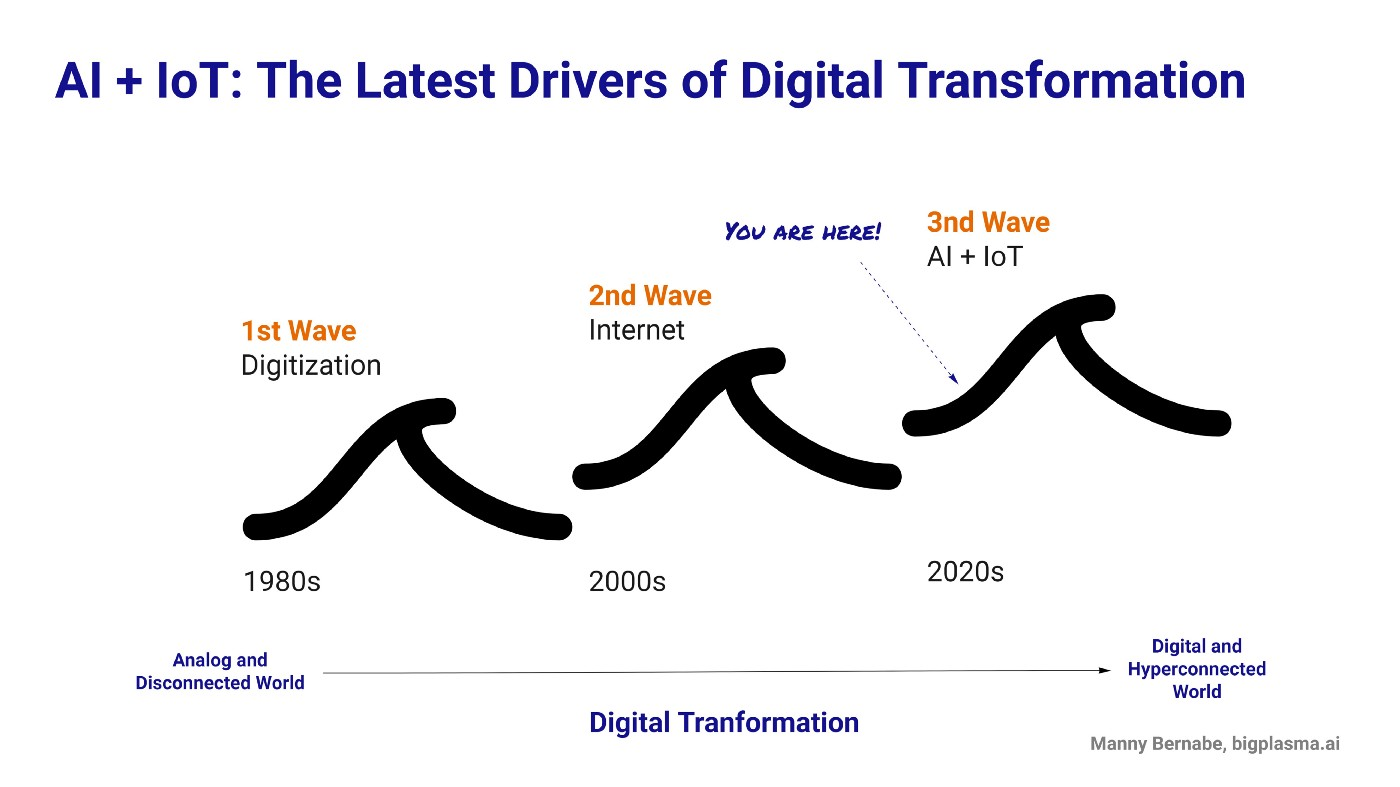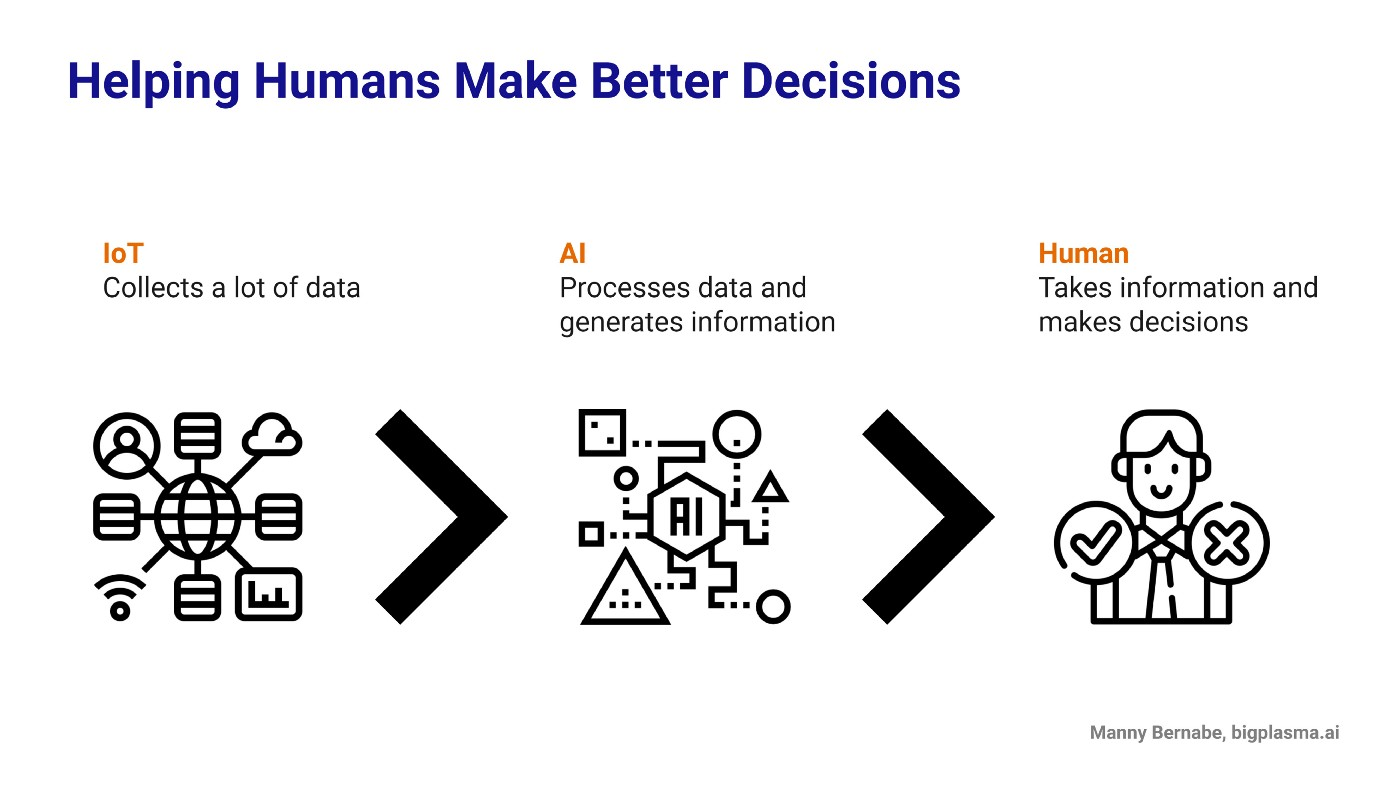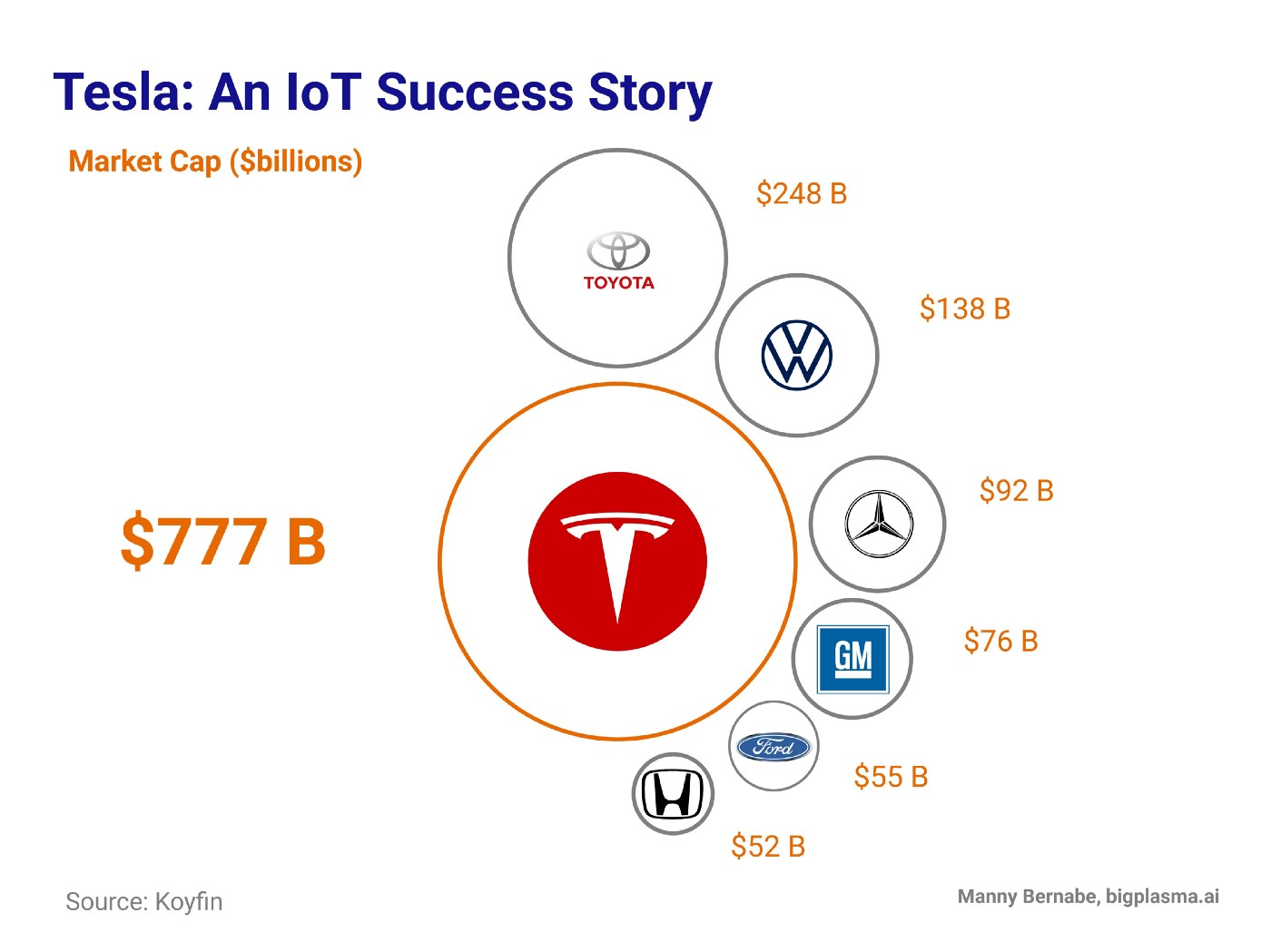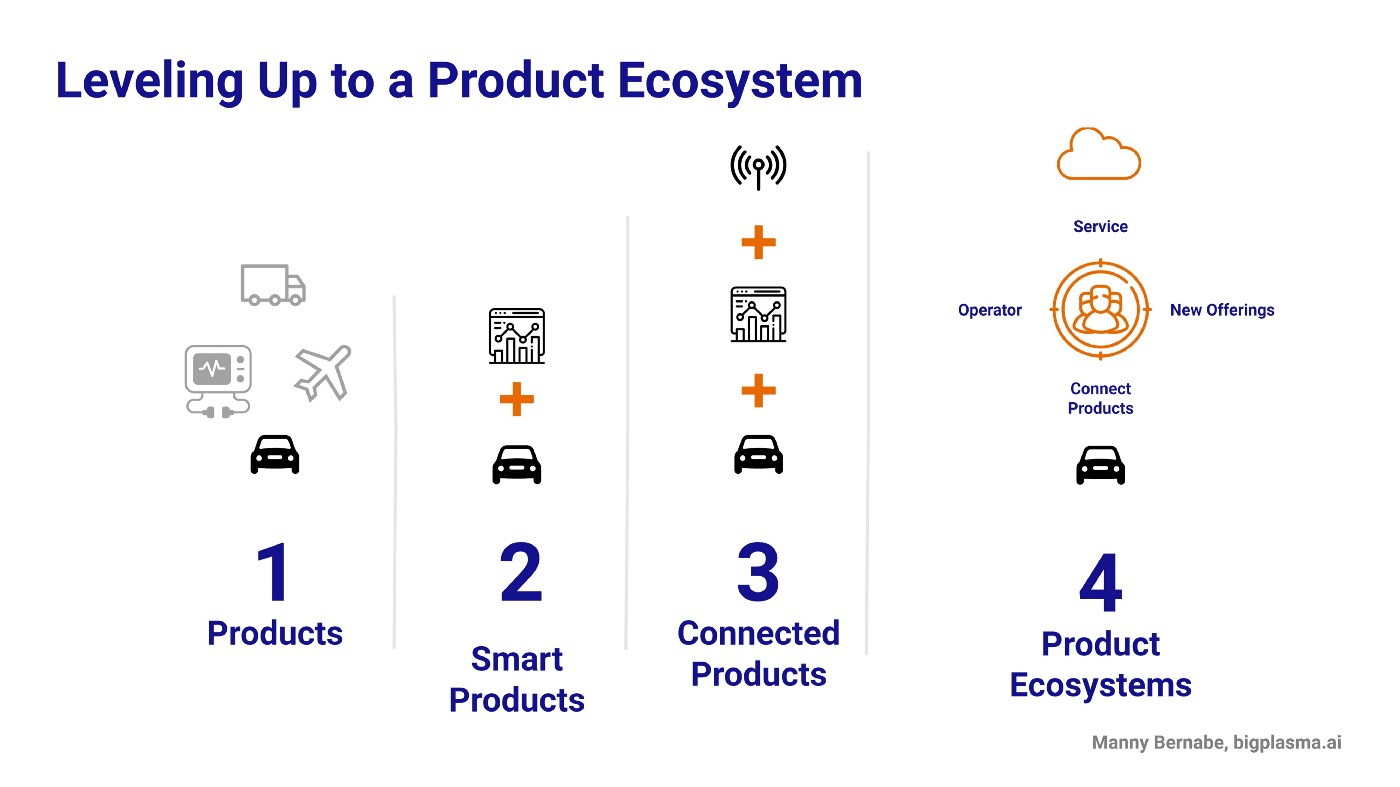How to Generate Revenue with IoT Predictive Maintenance
Manny Bernabe • 2021-09-27
We are in the early innings of a technological wave that will lead to great opportunity and massive disruption. You can’t feel it because it’s everywhere — which has been the case for past waves of digital transformation. The first wave of digital transformation hit in the 1980’s, with the advent of the personal computer. The second wave kicked off in the 1990’s, when the internet connected the world. AI and IoT are simply the latest drivers of this broader trend of moving from an analog, disconnected world to a digital, hyper-connected one.
When you think of IoT, or the Internet of Things, you might think of your smartwatch recording the rhythms of your heart or a home thermostat that tracks the climate of your house.
AI, or artificial intelligence, sounds like a sci-fi movie, but it is really just the use of algorithms to take large, disparate, and unique data sources and extract insights and information from them at scale.
Both technologies probably exist in your home, but the impact on business is even more dramatic. These waves present massive opportunities for a few capable and nimble organizations — and a mass extinction event for stale and inflexible companies. For every Windows and Google, there are hundreds of organizations that either didn’t see the wave of innovation coming, or were unable to adapt to the new environment.
In this series, we’ll focus on the latest digital transformation wave, which is combining sensor data (IoT) and AI to remake the business landscape yet again. This trend goes by other names, such as the fourth industrial revolution, Industry 4.0, the Second Machine Age, etc. The end result is the same: like past waves, it will result in many losers and a few big winners.
With IoT, we can now generate and capture a dizzying array of data. However, this presents the problem of having more data than humans can process, understand, and use. That’s where AI comes in. We use AI to crunch all that data, generating insights and information that we can use to make our lives easier.
Tesla is perhaps the best example of what is possible with IoT. Unlike other cars, your Tesla will improve over time. This is because Tesla uses persistent cell connection to report on key aspects of its cars functionally. It uses this information to automatically push software upgrades to improve performance. Tesla can also use this data to make changes in production. As a result, Tesla’s improvement cycle is much faster than the traditional car manufacturer. Using IoT, Tesla is now the most valuable car manufacturer in the world, despite being a relatively new player in the space. Additionally, this IoT data is foundational to Tesla’s goal of building a fully autonomous self driving capability.
New Wave. New Opportunities.
AI + IoT solutions can help address a number of critical business challenges: reducing maintenance cost, boosting customer satisfaction, optimizing inventory and logistics, ensuring product quality, and improving demand forecasting.
We can address those business challenges with a number of IoT use cases. In this series, our focus will be on leveraging predictive maintenance, in particular to build new services to our end customer. Predictive maintenance anticipates failures and sub-optimal performance before operations are impacted. We use IoT to capture the state of the machine and AI to detect abnormal behavior and take corrective action.
A “play,” or a strategic initiative, might be for a manufacturer to leverage AI + IoT to enable Predictive Maintenance for the aim of Boosting Customer Satisfaction. In this play, the manufacturer can open up new lines of business and connections with the end user, allowing the company more access to data, which can be used to facilitate new services and secure a beachhead in the real long-term play: the ecosystem.
The End Game: an Interconnected Ecosystem
The end game here is having a shot at effectively owning a customer’s entire product system: to be able to connect a number of smart, connected products into a cohesive, optimized product system, providing a seamless experience for the end users.
For example, John Deere is no longer selling farm equipment; they are selling “a farming equipment system” by connecting their tractors, tillers, combines, etc. into one optimized service for their farm customer.
The goal of the ecosystem is well illustrated in the race to dominate the “smart home” market by players like Amazon, Apple, and Google. Yes, Amazon wants you to have a smart TV — but it is just one part of the entire ecosystem of products they want to sell you, which includes digital assistants, cameras, audio systems, energy management, WiFi, etc.
This represents a fundamentally different approach to a manufacturer’s traditional business model of just making and selling one product. That is why this play is so hard for companies to implement, and is well beyond an IT project.
In our next piece, we’ll talk about the correct way to launch this type of play within your organization, as well as common mistakes and best practices.
See More Posts
Let's chat






